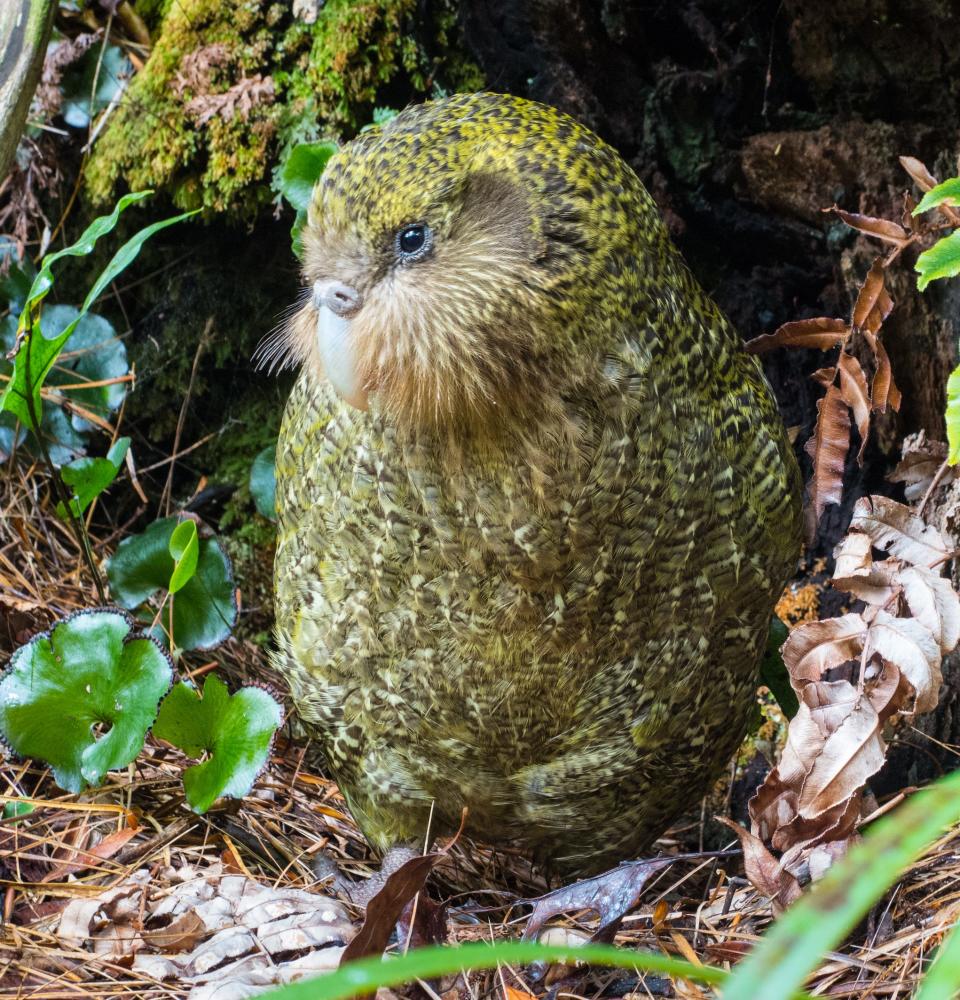We helped save the world's 'weirdest bird.' Here's how.
Conservation efforts to save a rare bird recently made the news. Topping the list of "the weirdest birds in the world," New Zealand's kakapo parrot was once thought to be extinct. But intensive conservation efforts stretching back to the 1970s have helped grow the species from in the low 50s in the 1990s to nearly 220.
USA TODAY Opinion spoke with Andrew Digby, the science adviser for kakapo and takahe with the New Zealand Department of Conservation, about his work with this endangered species.
Here's what he had to say about an extraordinary species, the work that has led to its survival and what he wants people to know about the kakapo. Digby's conversation with Editorial Board member Carli Pierson has been edited for length and clarity.

I've seen the kakapo referred to as the world's 'weirdest bird.' Can you tell me about it?
It's the bird that doesn't really know it's a bird; it doesn't behave like a bird at all. It behaves much more like a mammal. It's the only flightless parrot in the world. It lives on the forest floor. It climbs trees and nests in holes on the ground. They are nocturnal.
It moves very slowly. It lives for a long time: It may be one of the longest living, if not the longest living, birds on the planet. They have whiskers.

The breeding system they have is pretty unusual. The males all get together on hilltops; they create a little display arena; they dig these little holes in the ground, called bowls. And they connect up lots of these bowls by these tracks. And they meticulously groom these tracks every night and keep them very tidy and defend them.
Extreme heat across the world: Is 'wokeness' responsible for US and European heat waves? Absolutely.
And then they sit in these bowls and inflate these air sacs that they have, blow themselves up really big, like a football, and then do this booming noise. And this boom has a really low-frequency noise, which travels a long way. And that attracts the females. And so the females then come along from quite a long distance away. They basically listen to all the males and take their pick, and mate with them. So it's a female-choice mating system. Yeah, and it's very unusual. No other parent mates like that.
Tell me about the conservation efforts. I saw that you got the bird to the highest numbers in 50 years? How did you do that? And what did you learn?
The main conservation efforts started in the 1970s. These birds were thought to be extinct. So they discovered a couple of small populations. And since then, it's been really, really intensive to try and protect them. And the No. 1 thing to protect them is to get them to places where they're safe. The reason that they almost became extinct was because they were getting eaten by things like cats.
Getting them to offshore islands and then to try to help them breed. They breed really slowly. They don't breed every year, like most birds, they breed only every two to three years in relation to certain trees producing fruit.
That's where the intensive management comes in. We do lots of things, like we incubate the eggs artificially, which sometimes (is up to) 100 chicks. We have a lot of technology.
So, they went from a low of 51 in the mid-'90s. And now they're up to 220.
U.N. secretary-general: These five steps will help us kick our fossil fuel addiction and save the planet
The No. 1 takeaway, I think, is that this sort of conservation takes a long time. You can't just go in and do it for a couple of years and then think everything's going to be solved. It is intensive, but it can be successful.
The other thing is that technology is really important for us: We focus on the technology a lot, which enables us to manage them more efficiently and less intensively.
What would you like people to understand about this bird, and you and your team's work?
I think that the No. 1 thing is just awareness: People don't know that these species are in trouble. The kakapo, you know, we kind of get a bit of attention for them because it's kind of an unusual one (bird). But there's so many other species out there in just as much trouble, which no one knows about.
Getting people interested and involved in thinking about some of these things, conservation, for example, that they wouldn't otherwise do – that is the No. 1 thing.
Carli Pierson, a New York licensed attorney, is an opinion writer with USA TODAY, and a member of the USA TODAY Editorial Board. Follow her on Twitter: @CarliPiersonEsq
You can read diverse opinions from our Board of Contributors and other writers on the Opinion front page, on Twitter @usatodayopinion and in our daily Opinion newsletter. To respond to a column, submit a comment to letters@usatoday.com.
This article originally appeared on USA TODAY: What's the world's weirdest bird? We saved it from extinction


